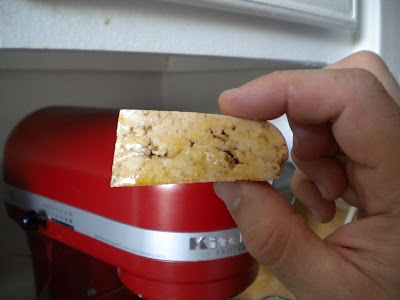
When I first started cooking, disasters would happen my kitchen rather often. For example, one time, while trying to make a custard, I didn't temper my eggs before adding them to the hot milk/cream and ended up with scrambled eggs. Another time, I overmixed muffin batter and ended up with pumpkin-spice flavored lead. But disasters very rarely happen in my kitchen these days. (Although I did make a batch of cayenne ice cream that traumatized my friends this past xmas. Sorry guys!)
In any event, Bittman's Death-by-Chocolate Torte was a complete disaster!!!!!! I am extremely disappointed with Mr. Bittman for leading me down a very wrong path. To be fair, the actual cake part of the recipe turned out well. It was very dense and chocolatey. But the butter-cream and the chocolate glaze turned out to be awful. It was so bad, I almost cried.

I should know by now to trust my own instincts in the kitchen (except for when I’m using cayenne). The first red flag went up when Mr. Bittman had me making the buttercream frosting in a blender. His recipe clearly states in step 3: “To make the butter cream, place 2 egg yolks in the container of a blender.” When I read that, I thought to myself, this doesn’t sound right, but ok, if Bittman says to do it, I’ll do it. So I followed his instructions and at one point about 1/3 of the way into adding all of the butter, my blender stopped blending the ingredients. The egg yolks were pooling at the bottom of the blender and the butter, sugar, and chocolate were sticking to the sides of the blender. At this point, I should have taken everything out of the blender and used my hand mixer, but stupid me trusted Bittman, so I continued adding the rest of the butter with absolutely no success. I ended throwing away the entire thing because there was no way to salvage it. I decided to forego the butter cream filling and just do the dark chocolate glaze on top.
The Dark Chocolate Glaze recipe (HTCE, p. 727) has you mix all of the ingredients (cocoa powder, heavy cream, butter, powdered sugar, and salt) together in a small saucepan and cook it over low heat until it’s combined and thickened. When I read this recipe, a second red flag went up as I thought to myself that I should heat the butter and the heavy cream together first and then slowly whisk in the cocoa powder and sugar. But Bittman’s method was much easier since all I had to do was dump everything into one pan and cook it over low heat. Well, that turned out to be a disaster as well. The butter, although cut into small pieces, did not melt quickly enough. So the entire mixture seized up and I was left with a disgusting clump of greasy, lumpy chocolate goop. I ended up having to throw that out as well. And at that point, I almost cried.

Instead of crying though, I started over, using the method I originally wanted to use, which was to slowly heat the butter and heavy cream together, mix together the powdered sugar, cocoa powder and salt, and then slowly whisk that mixture into the butter and heavy cream. This method turned out well, but I thought the mixture was too thick to be a glaze, so I used a bit more heavy cream and everything turned out ok in the end. I don’t think I will ever make this recipe again, and if I’m craving something dark chocolate, I’ll follow my instinct and use a recipe from Chris Kimball’s “The Dessert Bible”.






















 after rising
after rising















 Processing the butternut squash in the food processor rather than grating it by hand is a huge time saver. It also adds an additional bonus to the dish because the processed pieces are not all exactly the same size. So when cooked, because of the variation in size and shape from being processed rather than grated, they cook to different levels of doneness. The smaller pieces are cooked all the way down, yet the larger pieces are still al dente. I found this to be one of the best parts of the dish because you could really taste the squash and also enjoy different textures.
Processing the butternut squash in the food processor rather than grating it by hand is a huge time saver. It also adds an additional bonus to the dish because the processed pieces are not all exactly the same size. So when cooked, because of the variation in size and shape from being processed rather than grated, they cook to different levels of doneness. The smaller pieces are cooked all the way down, yet the larger pieces are still al dente. I found this to be one of the best parts of the dish because you could really taste the squash and also enjoy different textures.













